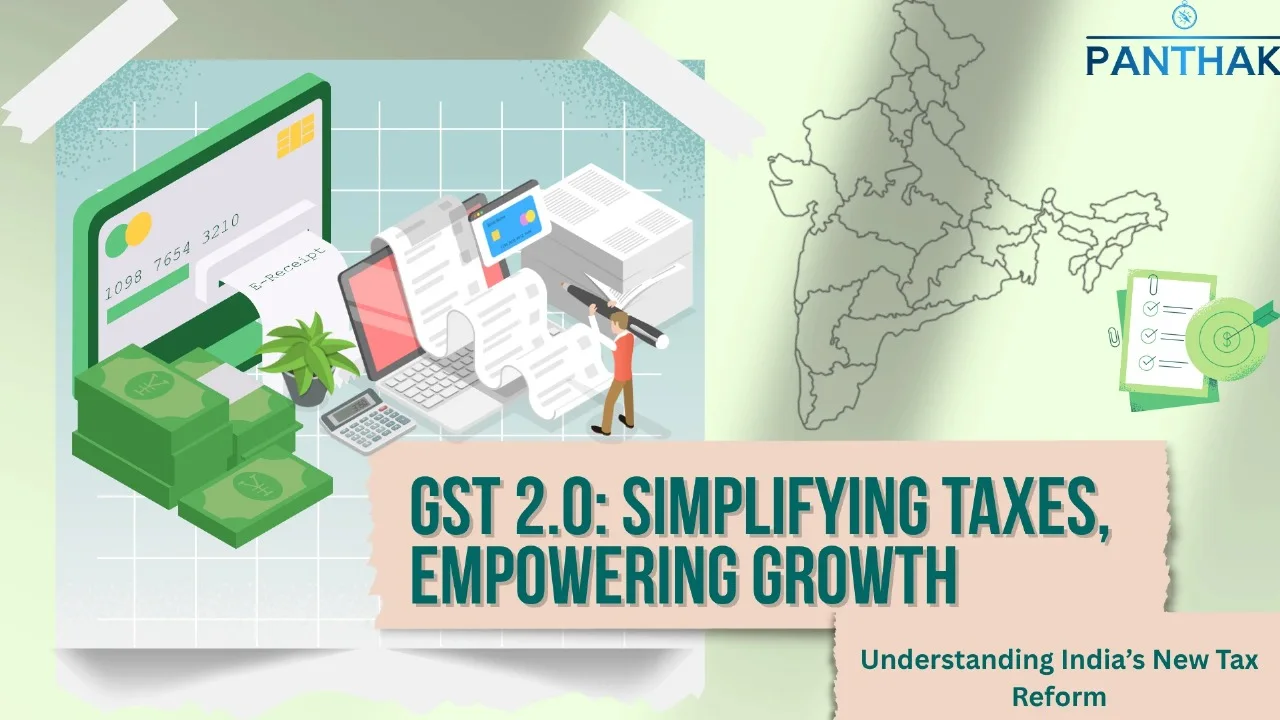Since its launch in 2017, the Goods and Services Tax (GST) has united India’s complex tax regime under one umbrella. However, many businesses and consumers found the original GST challenging, filled with complex rules, multiple slabs, and lengthy compliance processes. These difficulties led to confusion, delayed tax refunds, and doubts about whether the benefits reached everyday people.
On September 22, 2025, India introduced GST 2.0, a major reform aimed at addressing these issues. This new system simplifies GST rates, speeds up compliance, and reduces taxes on essential goods, making the tax system easier for businesses and more affordable for consumers.
What Is GST 2.0? A Simpler, Smarter Tax Structure
The original GST featured four primary tax slabs: 5%, 12%, 18%, and 28%, along with additional cesses on luxury and sin goods. This created confusion among consumers, retailers, and businesses.
GST 2.0 simplifies this to three clear tax rates:
- 5% GST on essentials like basic food items, healthcare products, and daily use goods.
- 18% GST as a standard rate for most goods and services.
- 40% GST for luxury and sin goods such as premium automobiles and tobacco.
This simplified tax slab structure makes pricing easier for businesses and easier to understand for consumers. The government estimates that this streamlining could reduce tax-related disputes by up to 30% annually.
How GST 2.0 Helps You Save on Daily Essentials
GST 2.0’s updated rates have a direct impact on your everyday expenses:
- A bar of soap may now cost around ₹25 instead of ₹28, saving money on basic daily items.
- Packaged snacks and beverages that moved to 5% GST are noticeably more affordable.
- Big-ticket appliances like refrigerators, TVs, and two-wheelers, previously taxed at 28%, now attract 18%, saving thousands of rupees.
- Even where prices have not dropped visibly, companies often increase pack sizes or offer bundles to pass on savings effectively.
Easier Tax Compliance and Faster Refunds for Businesses
Many small and medium businesses suffered under GST 1.0 due to extensive paperwork and refund delays, limiting their growth.
GST 2.0 improves this with:
- Prefilled GST returns, largely digital and error-free.
- Refund processing times cut by half.
- Reduced errors and simpler invoicing from fewer tax rates.
Improved cash flow helps businesses plan investments, hire more staff, and enhance customer service.
Streamlining Supply Chains and Cutting Costs
Complex GST rules previously delayed goods movement across states, increasing delivery times and logistics costs.
With GST 2.0, transit times have shortened by 12–15%, according to the All India Motor Transport Congress, due to less paperwork and simplified tax procedures. Faster logistics reduce costs, bringing down product prices for consumers.
These efficiencies benefit rural producers, urban manufacturers, and retailers alike, helping build a stronger, more integrated market.
Boosting MSMEs: The Independent Growth Engine
Micro, small, and medium enterprises form the backbone of India’s economy but faced refund delays and disputes before.
Since GST 2.0, MSMEs enjoy:
- Faster refunds and
- Lighter compliance burdens.
Industry experts forecast up to 10% export growth for MSMEs by FY 2026 due to smoother processes.
Are Businesses Passing on GST 2.0 Savings? The Real Challenge
Though GST 2.0 cuts taxes drastically, many consumers report not seeing full price benefits. Businesses, particularly in FMCG and retail, appear to keep higher profit margins.
For example:
- One Reddit user described how a protein brand adjusted its price:
Pre-GST cut, the MRP was ₹3,100 with a 10% discount, selling at ₹2,600.
Post-GST cut, the MRP was lowered to ₹2,900, but discounts were reduced to 6%, keeping the selling price about the same at ₹2,600. - Another Reddit user shared her experience with a gym membership:
She renewed her yoga membership on September 26. The gym initially charged 18% GST despite the new 5% rate.
They argued the GST was included in the fee and said she could pay again after a refund to apply the new rate.
After back and forth discussions, the gym issued a new bill with 5% GST but raised the base price, so the total cost remained unchanged.
This “profit over pass-through” practice weakens the economic boost GST 2.0 could provide. Stronger anti-profiteering enforcement is needed to ensure tax cuts reach buyers.
A Green Push: Tax Incentives for Sustainability
GST 2.0 lowers tax on solar panels, electric vehicles (EVs), and renewable energy equipment, promoting greener consumption.
EVs attract an 18% GST rate, down from 28%, expected to increase sales by up to 30% annually.
Solar energy firms report a 20% rise in rooftop panel installations since GST 2.0’s launch.
Aligning fiscal policy with environmental goals helps India move toward a cleaner, sustainable economy.
Transition Challenges and Government Support
Businesses faced initial challenges with IT upgrades, staff retraining, and relabeling stock within a strict two-month timeline.
Despite short-term delays, government training programs, digital toolkits, and helplines helped ease these transitions.
Most experts expect the disruption to fade by early 2026 as adoption stabilizes.
More Money in Your Pocket Means More Growth for India
Combined with income tax cuts and lower interest rates, GST 2.0 increases disposable income.
This demand boost may add up to 1.2 percentage points to India’s GDP growth next fiscal year.
What Lies Ahead for GST 2.0?
Success depends on:
- Fair pricing: Ensuring companies pass savings to consumers.
- Continued MSME support: Simplified, accessible compliance.
- Effective monitoring: Transparency and anti-profiteering measures.
GST 2.0 is a pivotal step toward a simpler, fairer tax system that benefits both businesses and consumers. With effective implementation and fair pricing, it has the power to unlock stronger growth and a more inclusive, sustainable economy for India’s future.





